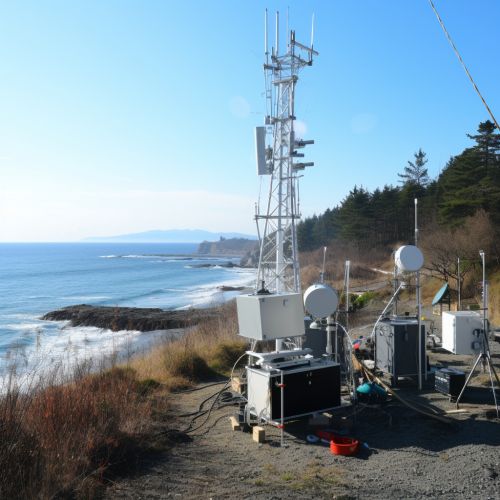Tsunami Warning Systems
Introduction
A Tsunami Warning System is a system designed to detect tsunamis in advance and issue warnings to prevent loss of life and damage. It is made up of two equally important components: a network of sensors to detect tsunamis and a communications infrastructure to issue timely alarms to permit evacuation of the coastal areas.


History
The concept of a tsunami warning system was first proposed in the aftermath of the devastating Pacific Ocean Tsunami of 1946. The United States established the Pacific Tsunami Warning Center (PTWC) in Ewa Beach, Hawaii in 1949, following the 1946 Aleutian Island earthquake and a deadly tsunami that resulted in extensive damage to coastal regions across the Pacific, particularly in Hawaii and Alaska.
Components of a Tsunami Warning System
A tsunami warning system comprises two main components: a network of seismic sensors to detect undersea earthquakes, and a communications infrastructure to disseminate warning information.
Seismic Sensors
Seismic sensors, also known as seismographs, are used to detect earthquakes that occur under the ocean floor. These sensors measure the intensity and frequency of seismic waves, which are vibrations that travel through the Earth's layers. The data collected by these sensors is crucial in determining whether an earthquake has the potential to generate a tsunami.
Communications Infrastructure
The communications infrastructure of a tsunami warning system is responsible for disseminating warning information to relevant authorities and the public. This infrastructure may include various forms of communication such as radio broadcasts, television alerts, text messages, and internet notifications.
Functioning of a Tsunami Warning System
The functioning of a tsunami warning system begins with the detection of an undersea earthquake by seismic sensors. The data from these sensors is then analyzed to determine the location, depth, and magnitude of the earthquake. If the earthquake is determined to have the potential to generate a tsunami, a warning is issued.
The warning includes information about the estimated time of arrival of the first tsunami wave, the areas that are likely to be affected, and the recommended actions for people in those areas. The warning is disseminated through the communications infrastructure to ensure it reaches as many people as possible in the shortest amount of time.
Importance of a Tsunami Warning System
The primary purpose of a tsunami warning system is to save lives and reduce property damage by providing advance warning of a tsunami. The effectiveness of a tsunami warning system depends on the speed and accuracy of the detection and analysis of undersea earthquakes, and the speed and reach of the warning dissemination.
Challenges and Limitations
While tsunami warning systems have significantly improved in terms of their speed and accuracy over the years, they still face several challenges and limitations. These include the difficulty in accurately predicting the size and impact of a tsunami, the limited reach of warning dissemination systems, especially in remote and rural areas, and the lack of public awareness and understanding of tsunami warnings.
Future Developments
Future developments in tsunami warning systems may include the use of advanced technologies such as artificial intelligence and machine learning to improve the speed and accuracy of tsunami detection and prediction. In addition, efforts are being made to improve the reach and effectiveness of warning dissemination systems, and to increase public awareness and understanding of tsunami warnings.
